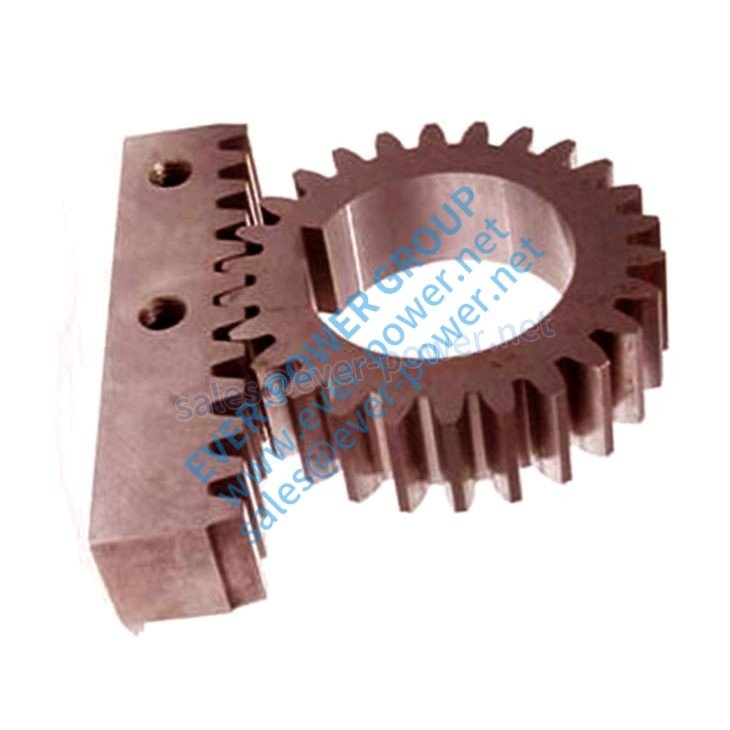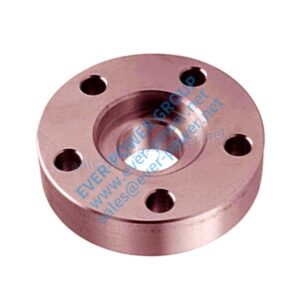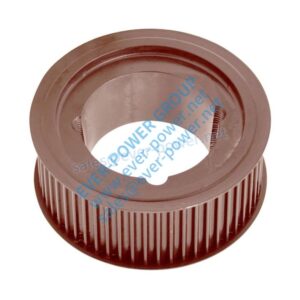Pulleys And Gears
Pulleys and Gears: The Essential Components in Rotary Motion Transfer
Pulleys and gears are essential components in the transfer of rotary motion from one place to another. Both of them are wheels, but they serve distinct purposes. Pulleys are wheels with grooves in the rims, allowing belts or ropes to run smoothly without slipping. They are used to transfer rotary motion from one shaft to another or to lift heavy loads. On the other hand, gears are wheels with teeth evenly spaced around the rims, and they can be used to change the speed and direction of rotation.
The History of Pulleys and Gears
The use of pulleys and gears dates back thousands of years, and they have played a vital role in human civilization. The ancient Greeks and Romans used pulleys to lift heavy objects during construction, and gears were used in clocks and other mechanical devices in medieval Europe. Today, they are used in various industries, including manufacturing, agriculture, transportation, and construction.
The Classification of Pulleys and Gears
Pulleys can be classified into fixed pulleys, movable pulleys, and compound pulleys. Fixed pulleys are attached to a stationary object and change the direction of the force applied, while movable pulleys are attached to the load, and compound pulleys are a combination of both fixed and movable pulleys. Gears can be classified into spur gears, helical gears, bevel gears, worm gears, and planetary gears. Spur gears have straight teeth and are the most common type of gear, while helical gears have angled teeth, allowing for smoother operation and less noise.
The Advantages of Pulleys and Gears
- Pulleys and gears can transfer high amounts of power over long distances with minimal energy loss.
- They can change the speed and direction of rotation, allowing for precise control over machinery.
- They are durable and can withstand heavy loads and high speeds.
- Pulleys and gears require minimal maintenance and can operate for years without replacement.
Materials Used in Pulleys and Gears
Pulleys and gears can be made from various materials, including metals like steel, brass, and aluminum, as well as plastics like nylon, polycarbonate, and PTFE. The choice of material depends on the specific application and the required strength, durability, and resistance to wear and tear.
Installation, Maintenance, and Repair of Pulleys and Gears
Pulleys and gears are relatively easy to install, and the process involves mounting them on shafts and ensuring proper alignment and tension. Regular maintenance involves lubrication and inspection for wear and tear. In case of damage or malfunction, repairs can be done by replacing the damaged component or disassembling the entire system and replacing all the parts.
Other Products We Offer
Our company offers a wide range of plastic gears used in various industries, including agricultural gearboxes, power output shafts, sprockets, fluid couplings, worm gear reducers, gears and racks, detachable chains, pulleys and pulleys, planetary gearboxes, timing pulleys, bushings, and more. We are committed to providing high-quality products, favorable prices, and excellent customer service. We welcome customers to come to us for customized products based on their drawings or samples.
Q&A
1. What are the differences between fixed pulleys, movable pulleys, and compound pulleys?
Fixed pulleys are attached to a stationary object and change the direction of the force applied, while movable pulleys are attached to the load, and compound pulleys are a combination of both fixed and movable pulleys.
2. What materials can pulleys and gears be made from?
Pulleys and gears can be made from various materials, including metals like steel, brass, and aluminum, as well as plastics like nylon, polycarbonate, and PTFE.
3. How are pulleys and gears installed?
Pulleys and gears are installed by mounting them on shafts and ensuring proper alignment and tension.
4. How do pulleys and gears change the speed and direction of rotation?
Gears can be used to change the speed and direction of rotation by interlocking teeth with other gears, while pulleys can be used to change the speed and direction by varying the size of the pulley or the tension on the belt or rope.
5. What is the advantage of using plastic gears?
Plastic gears can be lightweight, corrosion-resistant, and quieter than metal gears. They are also easier to manufacture and can be more cost-effective.
About us

We guarantee top-quality products at the best prices in China! Special orders are welcome, and if you’re interested in any of our products, feel free to reach out for more detailed information. We ensure our products are safe, high-quality, and reasonably priced. Please contact us as soon as possible if you’d like to learn more. We’re eager to cooperate with you!
A large portion of our products is exported to Europe and the Americas, with both standard and custom options available. We can manufacture according to your drawings or samples, using standard materials or as per your specific requirements. Choosing us means choosing reliability.

Materials Available
1. Stainless Steel: SS201, SS303, SS304, SS316, SS416, SS420
2. Steel:C45(K1045), C46(K1046),C20
3. Brass:C36000 ( C26800), C37700 ( HPb59), C38500( HPb58), C27200(CuZn37), C28000(CuZn40)
4. Bronze: C51000, C52100, C54400, etc
5. Iron: 1213, 12L14,1215
6. Aluminum: Al6061, Al6063
7.OEM according to your request

Surface Treatment
Annealing, natural canonization, heat treatment, polishing, nickel plating, chrome plating, zinc plating,yellow passivization, gold passivization, satin, Black surface painted etc.
Processing Method
CNC machining, punch,turning, milling, drilling, grinding, broaching, welding and assembly

QC & Certificate
Technicians self-check in production,final-check before package by professional Quality inspector
ISO9001:2008 , ISO14001:2001,ISO/TS 16949:2009
Package & Lead Time
Size: Drawings
Wooden Case/Container and pallet, or as per customized specifications.
15-25days samples. 30-45days offcial order
Port: Shanghai/Ningbo port

Industries We Service








